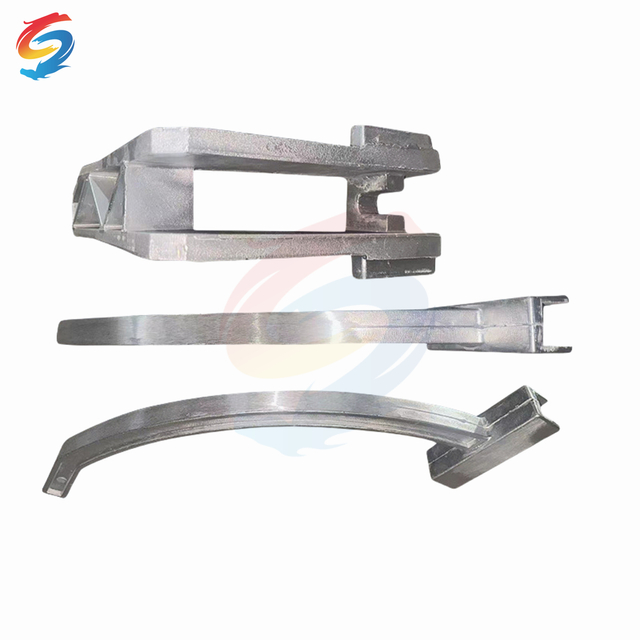Introduction
Stainless steel is one of the most versatile and durable materials in modern industry. Known for its corrosion resistance, strength, and aesthetic appeal, stainless steel has become indispensable in sectors ranging from construction and automotive to food processing and medical equipment. But not all stainless steels are created equal. In fact, stainless steel is an umbrella term that covers more than 150 different grades, each engineered for specific applications. Among them, a few common types dominate due to their superior balance of performance and cost.
In this article, we’ll delve deep into the most commonly used types of stainless steel, explaining what sets each apart, where they are used, and how to select the right one based on your needs.
What Makes Stainless Steel “Stainless”?
Before we dive into the various types, it's essential to understand what gives stainless steel its unique properties. Unlike ordinary steel, stainless steel contains a minimum of 10.5% chromium. This chromium reacts with oxygen in the air to form a thin, protective oxide layer on the surface, preventing rust and degradation. This self-healing layer is what makes stainless steel “stainless.”
Other elements like nickel, molybdenum, manganese, and nitrogen are often added to enhance specific properties such as corrosion resistance, tensile strength, and ductility. Based on the combination and proportion of these elements, stainless steel is classified into five major families: austenitic, ferritic, martensitic, duplex, and precipitation-hardening stainless steels. Among these, austenitic and ferritic types are the most commonly used.
Type 304 Stainless Steel – The Industry Standard
Composition and Characteristics
Type 304 is perhaps the most recognized and widely used stainless steel in the world. It belongs to the austenitic family and contains approximately 18% chromium and 8% nickel. This specific blend offers excellent corrosion resistance in a wide range of environments, especially in oxidizing and mildly reducing settings.
304 stainless steel is non-magnetic in the annealed condition and has excellent weldability, formability, and hygiene. Its ease of cleaning and non-reactivity with food and chemicals make it a top choice in kitchen equipment, food processing, and dairy industries.
Common Applications
Food preparation surfaces and appliances
Chemical containers and equipment
Architectural paneling and railings
Medical instruments
Type 304 strikes a balance between durability and affordability, making it a preferred option for both industrial and household use.

Type 316 Stainless Steel – The Marine-Grade Alloy
Superior Corrosion Resistance
While similar to 304 in many respects, Type 316 includes 2-3% molybdenum, which significantly improves its resistance to chlorides and other industrial solvents. This makes 316 ideal for environments with high exposure to saltwater, acidic chemicals, or coastal climates.
316 is also austenitic and shares the non-magnetic, high-strength characteristics of 304. However, its enhanced corrosion resistance comes at a higher cost.
Typical Use Cases
Marine fittings and coastal architecture
Pharmaceutical manufacturing equipment
Petrochemical and chemical processing plants
Surgical tools and implants
The enhanced properties of 316 stainless steel make it the gold standard in environments where 304 might fall short due to corrosion.
Type 430 Stainless Steel – Affordable and Formable
A Ferritic Alternative
Type 430 stainless steel falls under the ferritic category. Unlike austenitic stainless steels, 430 contains 17% chromium and very little nickel, making it more cost-effective. While its corrosion resistance is not as high as 304 or 316, it performs well in less aggressive environments.
One notable feature is that 430 is magnetic, making it useful in applications where magnetic properties are required. It also offers good thermal conductivity and resistance to oxidation up to 870°C.
Where You’ll See Type 430
Automotive trim and exhaust systems
Home appliances like refrigerators and dishwashers
Commercial kitchen equipment
Decorative architectural features
Despite its limitations in chemical resistance, 430 is a highly useful alloy in many cost-sensitive applications.
Comparing Common Stainless Steel Types
To make it easier to distinguish among the most commonly used types of stainless steel, here is a comparison table:
| Type | Family | Chromium (%) | Nickel (%) | Molybdenum (%) | Magnetic | Common Applications |
| 304 | Austenitic | 18 | 8 | 0 | No | Food industry, medical, architecture |
| 316 | Austenitic | 16 | 10 | 2-3 | No | Marine, pharmaceuticals, chemicals |
| 430 | Ferritic | 17 | <0.5 | 0 | Yes | Appliances, automotive, décor |
This table summarizes the key differences and helps readers choose the best alloy for their specific needs.

Frequently Asked Questions (FAQs)
Is stainless steel rust-proof?
Stainless steel is rust-resistant, not rust-proof. If exposed to harsh conditions like prolonged saltwater contact without proper maintenance, even stainless steel can show signs of corrosion, especially lower-grade types.
What is the difference between 304 and 316 stainless steel?
The main difference lies in their chemical composition. Type 316 contains molybdenum, which significantly improves its resistance to chlorides. This makes it more suitable for marine and chemical environments compared to Type 304.
Can stainless steel be welded easily?
Austenitic stainless steels like 304 and 316 are highly weldable. Ferritic types like 430 are weldable but may require specific techniques and post-weld treatments to prevent brittleness.
Conclusion
Choosing the right type of stainless steel depends on several factors: the intended environment, required strength, formability, corrosion resistance, and budget. While 304 is suitable for general purposes, 316 excels in corrosive settings, and 430 is ideal for applications that demand affordability without extreme corrosion resistance.
Understanding the distinctions among these types ensures better decision-making, whether you're designing industrial machinery or selecting materials for your kitchen. By carefully considering these properties, you can maximize performance and longevity while maintaining cost-effectiveness.


















